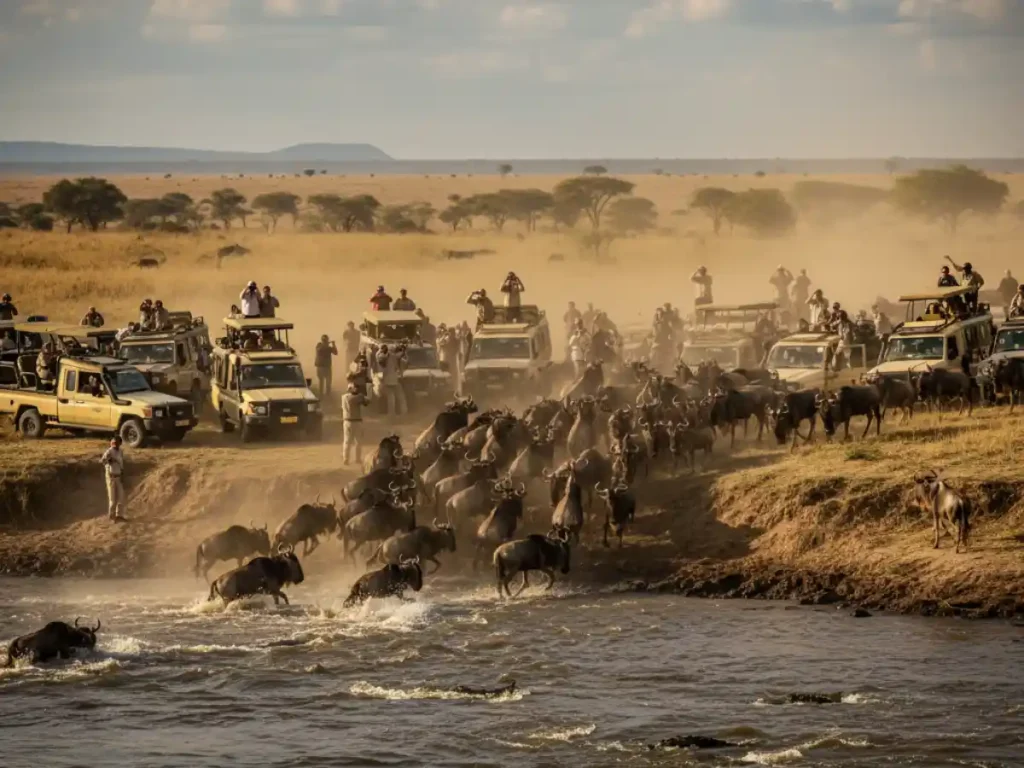Every year, the wildebeest migration transforms the Maasai Mara into one of the greatest natural theaters on Earth. Close to two million wildebeests, zebras, and gazelles set out on a relentless cycle, driven by instinct and the search for fresh grazing. It is a journey of survival — breathtaking in scale and raw in drama.
What Is the Wildebeest Migration?
The wildebeest migration is the largest land migration of animals in the world. Beginning in Tanzania’s Serengeti, herds travel hundreds of kilometers northward into Kenya’s Maasai Mara National Reserve, following seasonal rains. This isn’t just movement; it is life and death played out on a massive stage. Every hoofbeat echoes the rhythm of nature, drawing predators, scavengers, and birds of prey that turn the savannah into a living ecosystem in motion.
The Mara River Crossing: Heart of the Journey
The most dramatic chapter of the wildebeest migration Kenya is the Mara River crossing. At this stage, the herds gather nervously on the banks, sensing the dangers lurking in the waters below. Nile crocodiles lie in wait, while the fast currents claim the weak. Yet, driven by survival, wildebeests surge forward in a frenzy that seems chaotic but is nature’s choreography. For many travelers, witnessing thousands of animals plunging into the river is the pinnacle of the migration experience.
Best Time to See the Wildebeest Migration in Kenya
While the migration is a year-round cycle, the best time to witness the wildebeest crossing the Mara River is typically from July to October. During these months, the Maasai Mara becomes the epicenter of the migration, offering a front-row seat to one of the world’s most astonishing wildlife spectacles. The sight of endless herds blanketing the savannah, stretching as far as the eye can see, is an image that stays with you forever.
Maasai Mara’s Role in the Great Migration
The Maasai Mara wildebeest migration is not only a highlight for visitors but also a vital event for the ecosystem. Predators like lions, cheetahs, and hyenas thrive during this season, while the grazing herds rejuvenate the plains by trimming the grasses and fertilizing the soil. This delicate balance ensures that the Mara remains one of the most biodiverse regions in Africa.
Why the Wildebeest Migration Matters
Beyond its spectacle, the great migration Kenya is a symbol of resilience and the interconnectedness of life. It highlights the importance of conserving natural habitats and the fragile ecosystems that support such phenomena. For scientists, conservationists, and nature lovers, the migration is both a marvel and a reminder of the responsibility we share in protecting it.
The wildebeest migration is not just a wildlife event — it is a timeless story of endurance, instinct, and survival. To stand on the Mara plains and witness this great movement is to see nature at its rawest and most unforgettable.

